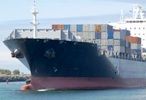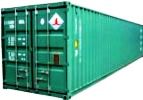Mubychem Group, established in 1976, is the pioneer manufacturer of Sodium Propionate API, Pharmaceutical, Fragrance & Flavor chemicals in India. Mubychem Group has several manufacturing facilities spread across Gujarat and Mumbai India and world wide contacts and toll manufacturers. We are exporting globally to countries like USA, Europe, UAE, South Africa, Tanzania, Kenya, Egypt, Nigeria, Uganda, Turkey, Mexico, Brazil, Chile, Argentina, Dubai, Indonesia, Spain etc. |
|
The participating units have one or more accreditations like FDA - GMP approval; ISO-9001 Certified; "REACH" registered; ISO-22000; Kosher Certified; Halal Certified; HACCP. We offer Pure & IP BP USP FCC Food Grade ACS AR Analytical Reagent Grades of Chemicals |
|





Sodium Propionate BP Ph Eur Sodium Propionate USP NF and FCC Food Grade Manufacturers
Sodium Propionate Manufacturers BP IP USP-NF FCC
MSDS of Sodium Propionate IP BP USP NF FCC Food Grade Manufacturers;
Sodium Propionate
Technical & Pure Crystals
CAS Number 6700-17-0 & 137-40-6, IP BP Ph. Eur. USP ACS AR LR FCC Food Grades

We offer Sodium Propionate Commercial Pure and Pharmacopoeia Grades
Sodium Propionate Commercial Pure
Sodium Propionate occurs as white or colorless, transparent crystals or as a granular, crystalline powder. It is hygroscopic in moist air.. The pH of a 1:10 aqueous solution is between 8.0 and 10.5.
Specifications:
Assay: Not less than 99.0% and not more than 100.5% of C3H5NaO2 after drying.
Alkalinity (as Na2CO3): Passes test (about 0.15%).
Iron: Not more than 0.003%.
Lead: Not more than 2 mg/kg.
Water: Not more than 1%.
Sodium Propionate BP Ph Eur Grade Specifications
C3H5NaO2
96.1 -- CAS Number 137-40-6
Action and use
Antifungal
DEFINITION
Sodium propionate
Content
99.0 per cent to 101.0 per cent Sodium propionate (dried substance).
CHARACTERS
Appearance
Colourless crystals or, white or almost white powder, slightly hygroscopic.
Solubility
Freely soluble in water, sparingly soluble in alcohol, practically insoluble in methylene chloride.
IDENTIFICATION
First identification A, D.
Second identification B, C, D.
A. Infrared absorption spectrophotometry.
Comparison reference spectrum of sodium propionate.
B. Dissolve 0.1 g in a mixture of 2 ml of copper sulphate solution and 2 ml of methylene chloride. Shake vigorously and allow to stand. Both the upper and the lower layer show a blue colour.
C. To 5 ml of solution S add 2 ml of 0.1 M silver nitrate. A white precipitate is formed.
D. Solution S gives reaction of sodium.
TESTS
Solution S
Dissolve 10 g Sodium propionate in carbon dioxide-free water prepared from distilled water and dilute to 100 ml with the same solvent.
Appearance of solution
Solution S is clear and colourless.
pH
7.8 to 9.2
Dilute 1 ml of solution S to 5 ml with water.
Related substances
Liquid chromatography.
Test solution: Dissolve 0.250 g of the substance to be examined in water and dilute to 100 ml with the same solvent.
Reference solution (a) Dissolve 10 mg of the substance to be examined and 10 mg of sodium acetate in water and dilute to 100 ml with the same solvent.
Reference solution (b) Dilute 1.0 ml of the test solution to 100 ml with water.
Column: ı
ı size: l = 0.25 m, Ĝ = 4.6 mm;
ı stationary phase: octadecylsilyl silica gel for chromatography (5μm).
Mobile phase Dilute 1 ml of phosphoric acid R to 1000 ml with water.
Flow rateı1 ml/min.
Detection Spectrophotometer at 210 nm.
Injectionı20 μl.
System suitability Reference solution (a):
ı resolution: minimum 5 between the peaks due to sodium acetate and sodium propionate.
Limits:
ı any impurity: not more than 0.1 times the area of the principal peak in the chromatogram obtained with reference solution (b) (0.1 per cent);
ı total: not more than half the area of the principal peak in the chromatogram obtained with reference solution (b) (0.5 per cent);
ı disregard limit: 0.05 times the area of the principal peak in the chromatogram obtained with reference solution (b) (0.05 per cent).
Readily oxidizable substances
In a ground-glass-stoppered conical flask introduce 10 g of the substance ( Sodium propionate.) to be examined.
Add 100 ml of water R and stir to dissolve. Add 25 ml of sodium hypobromite solution and 10 ml of a 200 g/l solution of sodium acetate, stopper the flask and allow to stand for 15 min. Add 10 ml of potassium iodide solution and 20 ml of hydrochloric acid while cooling.
Titrate with 0.2 M sodium thiosulphate, adding 2 ml of starch solution R towards the end of the titration. Carry out a blank titration. The difference between the volumes used in the 2 titrations is not greater than 2.2 ml.
Iron
Maximum 10 ppm.
10 ml of solution S complies with the limit test for iron.
Heavy metals
Maximum 10 ppm.
12 ml of solution S complies with limit test A. Prepare the standard using lead standard solution (1 ppm Pb).
Loss on drying
Maximum 0.5 per cent, determined on 1.000 g by heating in an oven at 105C for 3 h.
ASSAY
Dissolve 80.0 mg Sodium propionate in 30 ml of anhydrous acetic acid R. Titrate with 0.1 M perchloric acid, determining the end-point potentiometrically.
1 ml of 0.1 M perchloric acid is equivalent to 9.61 mg of C3H5NaO2.
Sodium Propionate FCC Food Grade Specifications
Sodium Propionate
CH3CH2COONa
C3H5NaO2 Formula weight 96.06
INS: 281 CAS 137-40-6
DESCRIPTION
Sodium Propionate occurs as white or colorless, transparent crystals or as a granular, crystalline powder. It is hygroscopic in moist air. One gram is soluble in about 1 mL of water at 25°, in about 0.65 mL of boiling water, and in about 24 mL of alcohol. The pH of a 1:10 aqueous solution is between 8.0 and 10.5.
Function: Preservative; mold inhibitor.
REQUIREMENTS
Identification:
A. A 1:20 aqueous solution gives positive tests for Sodium.
B. Upon ignition, a sample yields an alkaline residue that effervesces with acids.
C. Warm a small sample with sulfuric acid. Propionic acid, recognized by its odor, evolves.
Assay: Not less than 99.0% and not more than 100.5% of C3H5NaO2 after drying.
Alkalinity (as Na2CO3): Passes test (about 0.15%).
Iron: Not more than 0.003%.
Lead: Not more than 2 mg/kg.
Water: Not more than 1%.
Sodium Propionate NF USP Grade Specifications
Sodium Propionate
C3H5NaO2·xH2O
Propanoic acid, sodium salt, hydrate.
Sodium propionate hydrate [CAS Number 6700-17-0]
Anhydrous 96.06 [CAS Number 137-40-6]
Sodium Propionate, dried at 105 for 2 hours, contains not less than 99.0 percent and not more than 100.5 percent of C3H5NaO2.
Identification
A: Infrared Absorption 197K , on un-dried specimen.
B: A solution (1 in 20) responds to the tests for Sodium.
Alkalinity Dissolve 2.0 g in 20 mL of water, and add phenolphthalein TS: if a pink color is produced, it is discharged by 0.60 mL of 0.10 N sulfuric acid.
Water: not more than 1.0%.
Heavy metals Dissolve 2 g in 1 mL of 1 N acetic acid and sufficient water to make 25 mL: the limit is 0.001%.
Organic volatile impurities: meets the requirements.
(Official until July 1, 2007)
Assay Dissolve about 200 mg of Sodium Propionate, previously dried at 105 for 2 hours and accurately weighed, in 50 mL of glacial acetic acid. Add 1 drop of crystal violet TS, and titrate with 0.1 N perchloric acid VS to a green endpoint. Perform a blank determination, and make any necessary correction. Each mL of 0.1 N perchloric acid is equivalent to 9.606 mg of C3H5NaO2.
Sodium Propionate BP USP NF FCC Food Grade Manufacturers:
MUBYCHEM GROUP
CHINCHBUNDER, MUMBAI 400009, INDIA
TEL: (OFFICE) 91-22-23774610, 91-22- 23723564. 91-22-23728264
e-mail: anmol@pcmenergy.com

Copyright and Usual Disclaimer is Applicable.
Global or International Sodium Propionate Suppliers, Exporters, Importers, Manufacturers
If I give you “My Word” Nobody can undo it.
If I sign an “Agreement” my Lawyer will undo it
Perfection is made up of small thing but it is not small.
27-Jun-2025